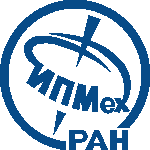
|
ИСТИНА |
Войти в систему Регистрация |
ИПМех РАН |
||
Continuum Discretization for Quantum Scattering and Nuclear Matter Calculationsдоклад на конференции
- Авторы: Rubtsova O.A., Pomerantsev V.N., Kukulin V.I.
- Международная Конференция : 23rd European Conference on Few-Body Problems in Physics, August 8 - 12, 2016, Aarhus, Denmark
- Даты проведения конференции: 8-12 августа 2016
- Дата доклада: 10 августа 2016
- Тип доклада: Устный
- Докладчик: Rubtsova O.A.
- Место проведения: Aarhus University, Дания
-
Аннотация доклада:
Recent developments of the Wave-Packet Continuum Discretization (WPCD) method are discussed. The approach is based on a finite-dimensional representation for the few-body free and channel resolvents in the stationary wave-packet bases. The solution scheme is realized on a discrete on energy and momenta representation which allows to replace few-body scattering integral equations with their matrix analogs and to construct effective interactions of composite particles as well. According to the usage of the normalized continuum states, one can take into account the long-range Coulomb interaction without screening within the Coulomb wave-packet formalism. The numerical scheme for solving the discretized Faddeev equations is highly parallelized and is realized by using the fast GPU technique. The above discretization technique is very useful in nuclear matter calculations where it allows to reformulate an integral formalism for the reaction matrix (such as the BetheGoldstone-type) in terms of the effective total Hamiltonian defined in the Pauli-allowed subspace. As a result, the reaction matrix at many relative momenta and energies can be found by using the respective Hamiltonian matrix diagonalization in the stationary wave packet basis which simplifies strongly the self-energy iterations. A way for an extension of the discrete approach to the account of three-nucleon correlations in nuclear matter on the basis of the three-body Bethe–Faddeev equations is discussed.
- Доклад на конференции выполнен в рамках проекта (проектов):
- Взаимодействие составных частиц и методы симметрии в ядерной и субъядерной физике
- Фундаментальные механизмы сильных изоспин-зависящих парных и многочастичных корреляций нуклонов в ядрах и ядерных процессах
- Добавил в систему: Рубцова Ольга Андреевна